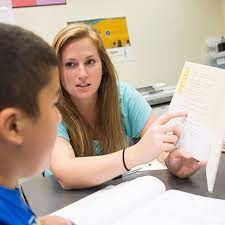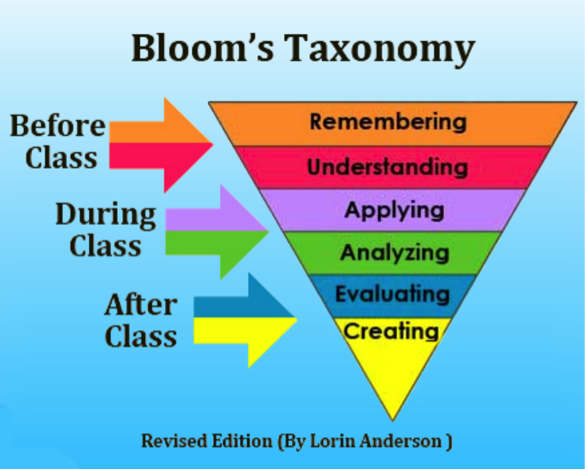Article No: 6 :
Teaching Approaches
There are a lot of other teaching methods.
Some of them are old and
others are modern.
Here, we are going to talk a
bout some of the old
methods,
showing their goals, merits and demerits.
• Grammar Translation Approach
• Direct Method Approach
• Reading Approach
• Audio-lingual Approach
• Oral or Situational Approach
• Cognitive Approach
• Effective Humanistic Approach
• Comprehension Approach
• Communicative Approach

1- GTM:
The grammar–translation method
is a method of teaching a foreign language
derived from the classical
(sometimes
called traditional) method of teaching
Greek and Latin. In
grammar–
translation classes, students learn
grammatical rules and then
apply those rules by translating
sentences between the target
language
and the native language.
Advanced students
may be required to translate
whole texts word-for-word.
It originated from the practice of
teaching Latin; in the early 1500s,
students learned Latin for
communication, but after the
language died out it was
studied purely as
an academic
discipline.
When teachers started teaching
other foreign languages
in the 19th century, they used
the same translation-based
approach as had been used fo
r teaching Latin. The method
has been
rejected by scholars,
and has no theoretical basis.
Teacher simply interprets the
material and explains the
grammatical structure.
This type of teaching is called the
Grammar Translation
Method (GTM).
In this method, fortunately for teachers,
the teaching
process is very
simple and easy. It requires students
to translate the whole text literally,
word for word and memorize
numerous grammatical
rules and
exceptions as well as enormous vocabulary lists.
Teacher simply interprets the material
and explains the grammatical structure.
This type of teaching is called the
Grammar Translation
Method (GTM).
In this method, fortunately for teachers,
the teaching
process is very
simple and easy.
It requires students to translate the
whole text literally, word for word and
memorize numerous grammatical
rules and exceptions as well as enormous
vocabulary lists.
This method begins with a massive bilingual
vocabulary list. Grammar
points come directly
from the text and are presented in the deductive
way. It is explained elaborately by the instructor.
Grammar thus
provides the rules for assembling
words. Tedious translation and grammar drills
are used to exercise and strengthen the knowledge
without attention to the content.
Sentences are deconstructed and translated.
Eventually, entire texts
are translated from
the target language into the native language
and
tests often ask students to replicate
classical texts in the target language.
There is no focus on the skills of listening,
speaking or communication. The skill which
is exercised is reading and
only in the
content of the translation.
The goal:
The
method has two main goals: to enable
students to read and translate literature written
in the source language, and to further students'
general intellectual development.
The goal is to read and translate literary
masterpieces and classics.
The demerits:
There
is feeling tedious, being extrinsically
motivated for the most part,
and barely interacting
with teachers. In addition,
the GTM totally
ignores listening and speaking skills.
That’s why the method is no
longer used in modern
language teaching classes. It is a teacher-based
teaching method. All focus is on the teacher.
The learner is passive as
he is not a participant.
For all of the teacher out there who find it hard
to differentiate instruction, you have no excuse,
as there are over 13 different teaching
approaches
and styles. This means you have at least 13 ways
to differentiate
instruction at all times.
In this piece, we will discuss 13 of them.
Analytic Teaching:A method of
monitoring and
evaluating students’ literacy progress that
recognizes,
respects, and appreciates the
students’ abilities.
Assumptive Teaching: A type of
instruction resulting
from teachers’ inaccurate assumptions about students’
abilities, which leads to discord between the teaching
program and the learner.
Deductive Teaching: A didactic style
of instruction
in which a teacher presents a generality or rule
with the
expectation that students will apply it to
specific scenarios.
Didactic Teaching: A style of teaching
in which
a teacher transmits content to students with the
expectation that they will simply learn it.
Discovery Teaching: A teaching style which
provides students with
an environment that
encourages them to find general patterns for
themselves. It is also called inductive teaching.
Non-Directive Teaching: A teaching
model
that uses facilitated teaching and focuses on
helping students set personal
goals.
Reciprocal Teaching: An interactive
learning
strategy aimed at teaching students to
summarize portions of text, predict potential
questions, and clarify the complex text.
At first, students
observe the teacher as he
or she models ideal behaviors; then,
they gradually
take on the teacher’s
instructional role.
Direct
Approach: A method of teaching
thinking skill in which the skill is presented
and then examples of its use are given.
Intentional
Teaching: Teaching that happens
when an educator is focused on creating a
plan to instruct students with a specific learning
goal or developmental
outcome in mind.
Readiness
Training: Instruction that equips
students with foundational skills and
background
knowledge to prepare them for subsequent
formal teaching.
Tiered
Instruction: The instructional method
of creating the best lesson possible
on a topic
and then extrapolating from the base lesson
to make it more
challenging for students who
are ready for advanced work and less
challenging
for students who are not ready
for the requirements of the base lesson.
Activity-Based
Approach: An approach to
instruction that makes teachable moments
out of
naturally occurring, everyday activities.
Guided
Comprehension Model:
An instruction process based on explaining,
demonstrating, guiding, practicing,
and reflecting that can scaffold comprehension.
2-Direct Method Approach:
The Direct Method Approach took stance
against GTM. This
method was largely in
opposition of GTM as it stressed those areas
of
teaching that GTM Approach overlooked.
It was mainly influenced by the view of the
scholars that also pioneered the first
IPA symbols.
It focused more on spoken skills and teaching
inductively with no use of L1. However, it had
its own flaws.
EX: trained teacher and other necessary
equipment li realia, pictures were hard to
acquire in every situation.Direct Method
Approach accentuated the spoken variety
teaching along with the new discoveries
on the side of phonology.
Direct Method :
1-Knowing a language was
being able to
speak it! Primacy of spoken word.
New method laid great
stress
on correct pronunciation and target
language from outset.
2-Second language learning must be an
imitation of first language learning, as this
is the natural way humans learn any language.
3- Printed word must be kept away from
second language learner.
Disadvantages of Direct Method:
Major fallacy of Direct Method was belief
that second language should be learned
in way in which first language was acquired.
First language learning is essential part of
child's total growth of awareness of world
around him.Part of the process of learning
how to live
is the acquisition of skills to
verbalize his desires and aversions and
to label his concepts.Effectiveness of
these verbalizing skills depends on
maturation level of the child / on type
of environment on intelligence.
3-Reading Approach:
It is focusing on the development of reading
skill. The basic principles of this approach
are presented as follows:

1. The teaching grammar is restricted. It is
taught to ease the reading comprehension.
2. The presentation of vocabulary is highly
controlled a the beginning and then
expanded later.
3. Translation is regarded as a fruitful
classroom practice.
4. Reading comprehension receives the
highest attention and it is heavily emphasized.
5. The foreign language is not used as a tool for
communication in the classroom environment.
4-Audio-Lingual Approach:
The audio-lingual approach dominated foreign
language teaching in the 1950s. Its
rise is
partly due to the fact that because of the
rapid increase of international trade, travel,
and commerce, ever more people needed
to
learn English. That includes ‘intellectually
less gifted’ people. The major aim is to
enable all learners to use English in
everyday oral communication.
Speaking is putbefore and above writing.
5- Situational Approach:
The situational approach,
the basic
premise of which is that different situations
demand
different types of leadership.
A situation, is a "set of values and
attitudes
with which the individual or group has to deal
in a process of activity. Every concrete
activity is the solution of a situation.
" Situations can be complicated affairs.
6- Cognitive Approach:
Cognition refers to mental activity
including thinking remembering,
learning and using language.
When we
apply a cognitive
approach to learning and teaching,
we focus on the
understanding of
information and concepts.
Cognitive theory maintains
that
how one thinks largely
determines how one feels
and behaves.
If we are able to understand
the connections between concepts,
break
down information and rebuild
with logical connections, then our
mention
of material and understanding
will increase. When we are aware
of these mental actions, monitor
them and control our learning
processes it is
called

7-Affective Humanistic
Approach:
Humanism would concentrate upon the
development of the child's
self-concept..
If the child feels good about him
or herself then that is a
positive start.
Feeling good about oneself would involve
an
understanding of ones' strengths
and weaknesses, and a belief in one's
ability to improve.
Learning is not an end in itself. It is the
means to progress towards
the pinnacle
of self-development, which means
'Self-actualization'. A
child learns because
he is inwardly driven, and derives his
reward from
the sense of achievement
that having learned something affords.
This would differ from the behaviorist view
that would expect extrinsic
rewards to be
more effective. Extrinsic rewards are
rewards from the
outside world,
e.g. praise, money, gold stars, etc.
Intrinsic rewards
are rewards
from within oneself, rather like a
satisfaction of a need.
8- Comprehension Based
Approach:
The Comprehension Approach refers to
several methodologies of language learning
that emphasize understanding of
language rather than speaking.
It is a pedagogical/instructive principle,
which can be found in a
number of
methods and in practical listening
comprehension:
A. Comprehension should be taught by
teaching learners to understand meaning
in the target language.
B. The learners' level of comprehension
exceed their ability to produce language.
C.Language skills emerge when learners
have well developed comprehension skills.
D. Such an approach reflects how children
learn their first language.
9-Communicative
Approach:
Click here to go to: CLT

10-English-Only Approach
The English only method is one of the
most
direct approaches to teaching the language.
For this method,
neither the teacher
nor the student should speak their native
tongue at
all during instruction. All instruction
should be done in English only.
Vocabulary
should be taught first, as it is the
easiest to grasp because it can be demonstrated
with a visual aid. As the student builds vocabulary,
the instructor can begin introducing abstract words
and elements of the
language, but without
explaining or focusing on the actual grammatical
structure. The complexities of the language
will be learned inherently,
with the student
picking up on its patterns through
practice and
application only.
At the end of each class period, there
can be an
optional question and answer
session where students are allowed
to ask
the teacher about that day’s lesson.
Here, clarifications may be made
and
confusion may be cleared up, but again,
this is entirely optional.
Sometimes, t
he best way to learn the language
through this method is to just tough it
out and let it come naturally.

Which is this best for?
This method is best for
students learning the
English language because of an academic
interest
in it as a language, and not
just an interest or need to know how to
speak it. Speaking, reading, and writing
the language will be given
equal priority,
and grammar rules and concepts
will not be avoided for a more “natural”
approach. It will be taught academically,
as any other
subject, and is best for
students who are interested in this kind
of
rigorous approach.
11-Immersive Approach
The immersive approach is one of the best
ways to learn the language for older students
who are able to travel for their education.
Someone who wants to learn English
doesn’t even need
to be enrolled in an
English language course to use this method –
all
they need are the resources
involved in travel.
For students
wanting to learn British English,
a trip to the United Kingdom is recommended.
For students wanting to learn American English,
a trip to
the United States is recommended.
If the student wants an academic-heavy
approach, there are foreign exchange
programs they can enroll in
through colleges,
or other academic programs
that allow prolonged
travel.
Again, an academic program is not required
for this
method. Staying in a new country
and learning the language through pure
immersion and necessity is one of the best
ways to learn it quickly.
Students will be
surrounded by media in that language,
and people who speak that language.
It is a great way t break off from the
distractions of your native tongue,
and learn how to think in the
English
language as well as speak it.
Who is this best for?
Teachers
and students who are able to
travel and stay in another country long
enough to develop a strong grasp on
the English language.

12-Community Language
Learning
In this method attempts are made to build strong
personal links between the teacher and
student
so that there are no blocks to learning.
There is much talk in the mother tongue
which is translated by the teacher
for repetition by the student.

13-The Lexical Approach:
Learners
learn English through meaning, feeling
and practice.The teacher uses his real situations
and authentic material and visual aids to present
the new vocabulary or the grammatical
rule form. The teacher uses
interesting
styles to make learners feel the language
and become
interested in it.
The teacher creates changeable collocations
to be used
in a question and an answer with
constant chunks. Students work in
pairs as a
model first, then as free practice.The teacher does
a model
practice. Learners do free practice in
pairs. Learners do a
communication practice.
This is used in dealing with the new vocabulary,
expressions, idioms, phrasal verbs or with
grammatical structures.
I wait for your comments,
Ads, Branding, videos,
researches, posts and links.
Thanks a lot.
Mr. / Girgis
https://mrgirgis.blogspot.com/







No comments:
Post a Comment